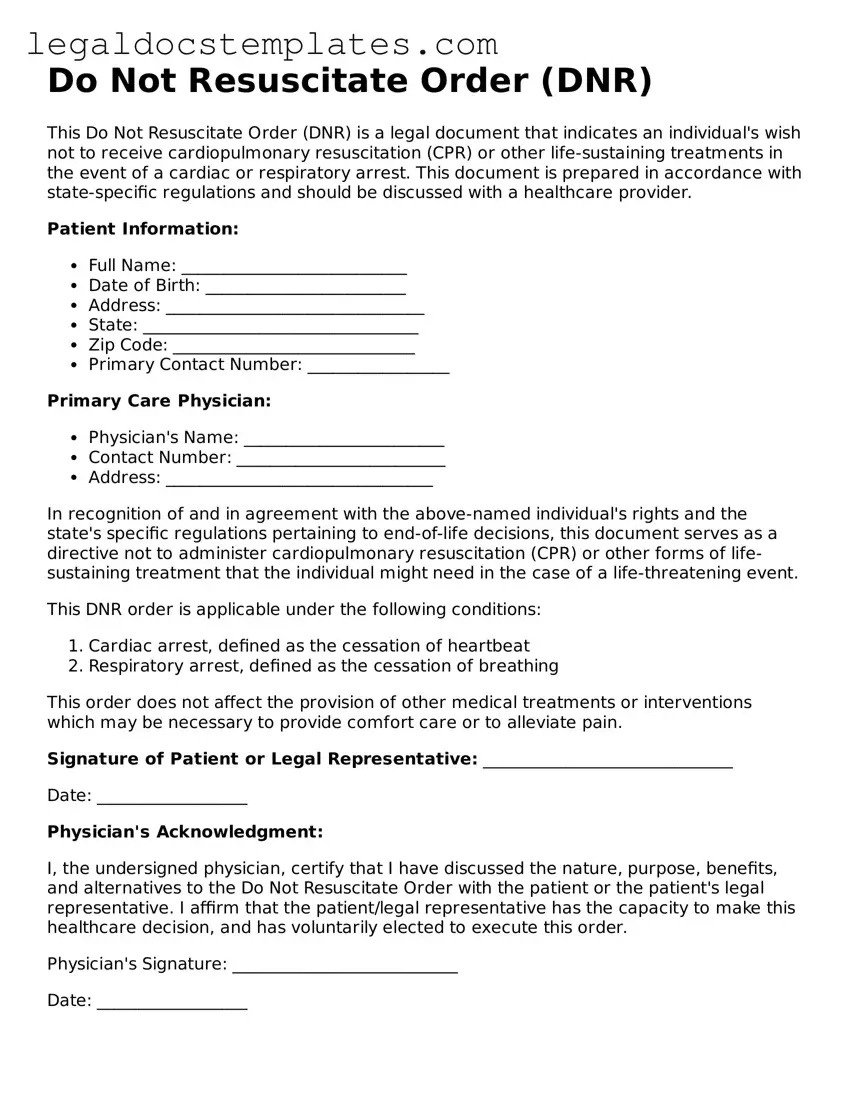A Living Will is closely related to a Do Not Resuscitate (DNR) Order in that it communicates a person's wishes regarding medical treatment when they're unable to make decisions for themselves. While a DNR specifically addresses the use of CPR or advanced cardiac life support, a Living Will can provide instructions on a range of treatments, including life support, hydration, and feeding methods. Both documents are proactive steps to ensure an individual's healthcare preferences are known and respected.
A Medical Power of Attorney (Healthcare Proxy) document resembles a DNR Order as it appoints someone to make healthcare decisions on behalf of an individual if they become incapacitated. The fundamental similarity lies in their purpose to honor the healthcare preferences of the individual. However, whereas a DNR is a direct instruction not to perform CPR, a Medical Power of Attorney encompasses a broader range of medical decisions and does not necessarily include instructions regarding resuscitation.
An Advance Directive is another document similar to a DNR in its function to guide medical care when an individual cannot communicate their wishes. It combines elements of both a Living Will and a Medical Power of Attorney, covering an individual’s treatment preferences and appointing a decision-maker. Like a DNR, it is a key part of planning for end-of-life care, though it is more comprehensive in scope.
The Physician Orders for Life-Sustaining Treatment (POLST) form mirrors the intent of a DNR by providing specific instructions regarding a range of life-sustaining treatments, including resuscitation. Signed by both the patient and their physician, the POLST form is recognized in many states and is effective immediately upon completion. It is designed for seriously ill or frail individuals for whom health care professionals would not be surprised if they died within a year.
A Patient Designation of Another to Consent form shares the purpose of ensuring a person's medical care preferences are upheld, similar to a DNR. By designating another person to make healthcare decisions, this document functions similarly to a Medical Power of Attorney, yet it is more limited in scope focusing on consent for general medical procedures rather than end-of-life decisions. It's a safeguard for scenarios where an individual's decision-making capacity is in question.
Emergency Medical Information forms, which provide critical health care instructions and information to emergency responders, have similarities to a DNR. These forms can include a DNR order or specify conditions like allergies, medications, and chronic conditions, ensuring that first responders can provide appropriate care. The key similarity lies in their role in informing immediate medical treatment based on the patient's conditions and preferences.
A HIPAA Authorization Form, while primarily focused on privacy, indirectly relates to a DNR by controlling access to one’s medical records and sharing information about their health status. By specifying who can receive health information, it can ensure that healthcare proxies or family members are informed about the patient's wishes, including DNR status, which is crucial for making informed decisions on the patient’s behalf.
An Organ and Tissue Donation Form is connected to a DNR in the context of end-of-life planning. While a DNR focuses on the refusal of life-sustaining treatments, the donation form specifies an individual's intentions regarding the donation of organs and tissues after death. Both forms address an individual's wishes for what happens to their body, one during potential life-saving situations, and the other post-mortem.
Last Will and Testament documents, though traditionally focused on the distribution of assets and the care of dependents, indirectly tie to the concept of a DNR through the broader scope of end-of-life planning. They facilitate expressions of a person's wishes upon death, including funeral arrangements and, in some cases, may reflect on the person’s health care preferences. Both serve to ensure that an individual’s wishes are respected and followed in critical moments.
